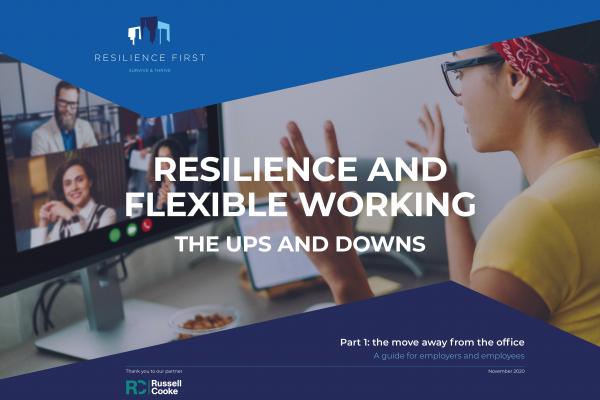People:
- Increased social and societal awareness. Many companies are increasingly conscious of their corporate social responsibility in the face of universal hardships with the pandemic and the government’s largess to steer the county away from the economic rocks. This will encourage a commitment to stakeholders (‘stakeholder capitalism’) as well as shareholders and spur a search for wider, collective resilience. This will result in a greater engagement with the wider community and local services as well as a wider role for diverse partnerships.
- More home working. From a base of around 5% of people working from home before the pandemic, this can be expected to rise to over 50% for some companies in the foreseeable future, perhaps with one or two days in the office to maintain personal contact. Those with home/flat distractions or constraints may be keener to return to the office. The home focus will still require businesses to observe a duty of care towards employees and supply the right type of equipment. Conversely, remote monitoring of people and will allow performance to be assessed.
- Fewer commuters. The corollary to more home working is less commuting, with fewer train, car and Tube journeys. Public transport fares may have to increase to compensate for the loss of passengers. While some will continue to prefer the privacy and security of their cars, environmental constraints on road traffic will accelerate the fall in urban pollution.
- Reduced business travel. The rapid and largely successful uptake of video conferencing, together with a reluctance to sit in confined and close proximity to others, will see fewer business-related air miles and airport usage. Those who do fly will see reduced schedules and a dedensification of passenger loading in aircraft and airports to help social distancing. Prices may increase significantly as a result.
- Skills fade. The need to retrain after prolonged absence will be important for people in high-skill environments e.g. air-traffic controllers, flight engineers. This will require on-line distance learning packages and the delivery of VR computer programmes for staff in key roles. Continuous training will have to be delivered in novel ways.
- Revised recruitment and retention policies. Companies will reassess staffing levels. New working conditions and team structures will be sure to appear. Fewer permanent staff with more outliers/temps can be expected.
- Increased staff health awareness will centre on contact tracing, fitness, and mental health. There will be long-term repercussions from the pandemic on some people’s mental health so this should be included in any duty-of-care obligations.
Property/Place:
- Reduced local services. With fewer staff coming into the office, there is expected to be a reduced need for many local facilities e.g. restaurants, coffee shops, gyms, etc. Coupled with a reduction in local and foreign tourism, this will put pressure on hotels and venues to maintain income and services.
- Fewer offices. Home working will mean a reduced demand for city-centre office space. Companies may be keen to downsize and/or reduce rental costs. Demand for shared office space, hot desking and regional hub sites may increase.
- Fewer ancillary staff. As office occupancy diminishes then the need for security staff, receptionists, caterers, etc, will fall away. Remote surveillance of premises in preference to guards and patrols will intensify.
- More service centres. As on-line traffic grows, and people require better remote access and support then there will be a greater need for call centres to handle calls and couriers to deliver items to working-at-home locations and off-site hubs. More on-line security will be needed as people use remote access.
- Consolidation of assets. As finances become tight then it would be reasonable to expect a consolidation in certain market sectors with increased mergers and acquisitions. This may inevitably lead to larger (market dominant) organisations, with corporate concentration resulting in less competition.
Process:
- Supply-chain diversification. Reliance on single-source or single-country supplies has revealed a weakness which will be addressed by greater self-sufficiency and/or a diversification of suppliers. The critical mass of production can be expected to move closer to home and cross-border business may decline. This will inevitably come at a price.
- Increased stockpiling. Greater redundancy through better stock holdings will place an increased demand for surplus warehousing capacity. This will be reflected in a shift from just-in-time to just-in-case logistics. There will be another cost to this.
- Consolidation of processes. The search for greater efficiency with fewer people will see a streamlining of processes and procedures, leading to a reduction in departmental silos and, hopefully, better cross-silo working.
- Better connectivity. As the demand for data capacity increases, there will be greater moves to roll out super-fast broadband and 5G services. This will also increase energy demands and costs.
- Quicker adoption of new technologies. There will be an acceleration in the digitisation of processes and payments, plus an increase in e-commerce with greater on-line transactions. This will drive high-tech solutions and technological innovation. Non-touch and stand-off interfaces such as facial recognition and remote check-in will be preferred in an effort to minimise direct surface contact.
- Increased use of automation. In moves to reduce the dependency on people, there will be an increased deployment of robotics, AI and neuroscience – all part of the 4th Industrial Revolution.
- Green resilient recovery. Climate change remain as a universal challenge. Recovery from the pandemic cannot be allowed to worsen environmental degradation through a rush to return to economic growth at any price.
For further reading, please visit our Knowledge Hub.



